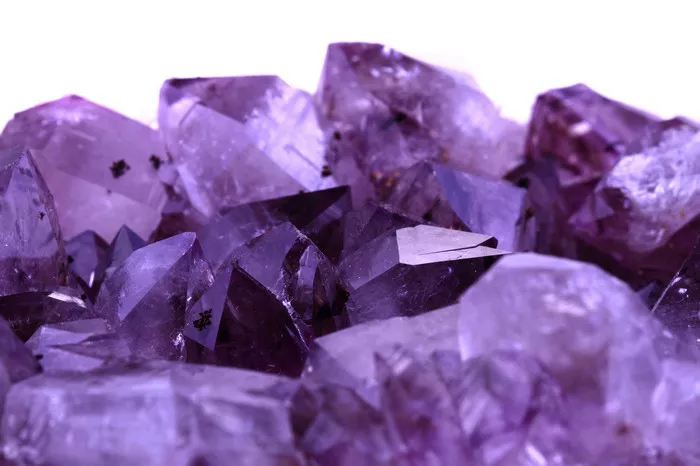Amethyst, with its regal purple hues and soothing energy, has long been cherished as a popular gemstone. Its association with tranquility and spiritual healing has led many to wonder whether amethyst can go in water. In this article, we delve into the compatibility of amethyst with aquatic environments, exploring the potential effects of water on this enchanting gemstone and providing guidelines for safely incorporating amethyst in water-based settings.
Understanding the Composition of Amethyst:
Amethyst is a variety of quartz, a mineral composed of silicon dioxide. It gains its stunning purple color from the presence of trace amounts of iron and other impurities within the quartz structure. The durability and stability of amethyst make it suitable for various applications, including jewelry, home decor, and even water-related uses under certain conditions.
Evaluating the Impact of Water on Amethyst:
Physical Properties:
Amethyst is generally unaffected by brief exposure to water. Its hardness rating of 7 on the Mohs scale indicates that it is relatively resistant to scratching and abrasion. However, while durable, amethyst’s physical properties do not guarantee complete immunity to potential damage or alteration when submerged in water for extended periods.
Color Fading and Leaching:
Extended exposure to water, especially if it contains chemicals or impurities, can potentially lead to color fading or leaching in amethyst. Harsh chemicals, such as chlorine or saltwater, can gradually dull or alter the purple hue of the gemstone. Similarly, water with high mineral content may cause mineral leaching, resulting in changes to the stone’s appearance over time. To preserve the vibrancy of an amethyst, it is advisable to minimize direct and extended contact with water.
Porosity and Water Absorption:
Amethyst, like other gemstones, has varying degrees of porosity, which determines its ability to absorb water. Some amethyst specimens have microscopic pores or fractures that may allow water to penetrate the stone. While this absorption may not cause immediate damage, prolonged exposure to water can potentially lead to structural changes, including the weakening of the gemstone or the development of cracks. As a precautionary measure, it is recommended to avoid submerging amethyst in water for extended periods, especially if it contains visible fractures or inclusions.
Best Practices for Safely Incorporating Amethyst in Water-based Settings:
Surface Contact:
One way to enjoy amethyst in water-based settings is by ensuring that it only comes into contact with the surface of the water. This can be achieved by placing amethyst crystals or jewelry on the rim of a water container or floating them in a decorative vessel. This method allows for visual appeal and the potential energetic properties associated with amethyst while minimizing direct water contact.
Protective Coatings:
Applying a protective coating to amethyst can offer an additional layer of safeguarding against potential damage from water exposure. However, it is crucial to use coatings specifically designed for gemstones and seek professional advice to ensure compatibility and longevity. The coating should not interfere with the gemstone’s natural beauty or alter its metaphysical properties.
Regular Maintenance:
To maintain the integrity of amethyst, regular cleaning and maintenance are essential. After any contact with water, thoroughly dry the gemstone to prevent water residue or mineral buildup. Clean amethyst gently using mild soap and warm water, avoiding harsh chemicals or abrasive cleaners that can potentially compromise its appearance or structure.
Consider Alternative Options:
If the primary purpose of incorporating amethyst in a water-based setting is for its metaphysical or energetic properties, utilizing alternatives to direct water contact can be equally effective. For instance, placing amethyst near the water source or using water-safe containers with amethyst accents can provide the desired aesthetic and energetic benefits without exposing the gemstone to potential damage.
Individual Considerations and Expert Advice:
It is important to note that the impact of water on amethyst can vary depending on the specific gemstone, its quality, and any existing fractures or inclusions. Consulting with a reputable gemologist or jewelry professional can provide valuable insights tailored to your specific amethyst and intended use.
Conclusion:
While amethyst is relatively durable, care should be taken when considering its exposure to water. Extended contact with water, especially if it contains chemicals or impurities, can potentially lead to color fading, leaching, or structural changes in amethyst. By following best practices, such as surface contact, protective coatings, regular maintenance, or exploring alternative options, it is possible to safely incorporate amethyst in water-based settings while minimizing potential risks.
In conclusion, while amethyst can be enjoyed in water-based settings with proper care, precautionary measures should be taken to safeguard its beauty and structural integrity. By understanding the impact of water on amethyst, following best practices, and seeking professional advice when necessary, you can ensure a harmonious and long-lasting relationship between amethyst and aquatic environments. Whether gazing at its ethereal purple hues or harnessing its spiritual energy, amethyst remains a captivating gemstone that deserves thoughtful consideration and appreciation.


